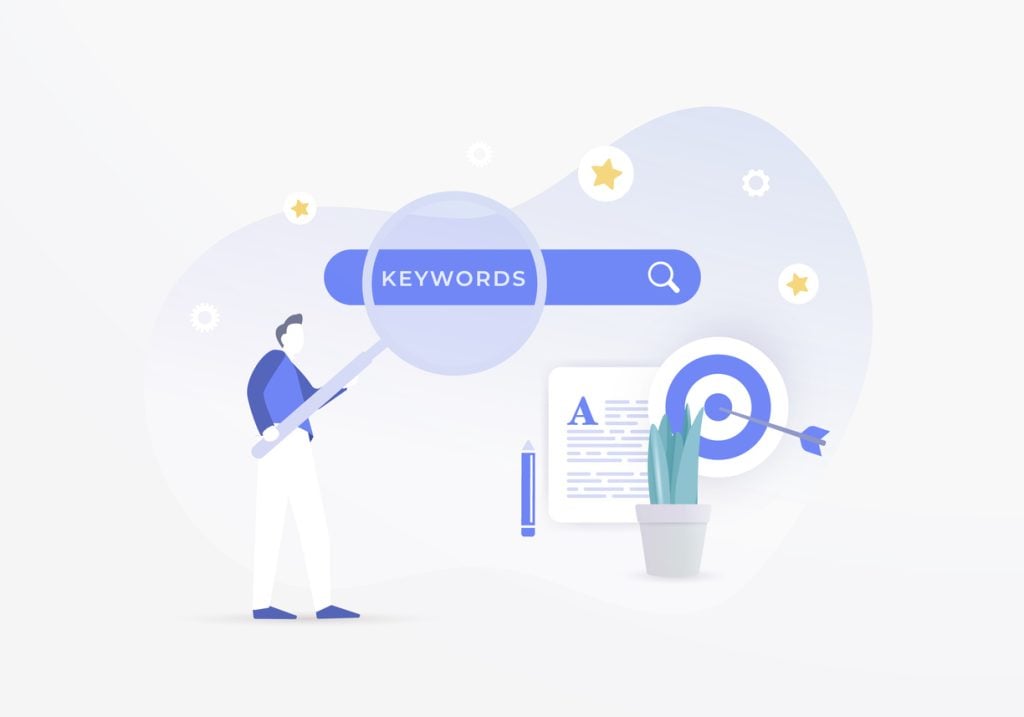Whether you’re new to digital marketing or you’re a seasoned pro from the early days of SEO, you’ve probably seen your fair share of jargon. Marketing acronyms like SEO and SEM are both numerous and confusing, which doesn’t make it easy to feel confident about finding the right strategy.
However, if there’s one thing you probably are confident about, it’s that getting to the top of Google’s search results is the key to your brand’s success. After all, with a whopping 25% of all searchers clicking the first organic link, it’s a hike in visibility you can’t afford to miss out on!
How can SEO and SEM help, and what do these marketing terms involve? If you’re ready to start climbing up the rankings, here’s what you need to know.
What Is SEO?
SEO, or “search engine optimization,” refers to strategies that help your website rank higher in the search engine results pages (SERPs). These strategies can increase the amount and quality of web traffic by increasing your site’s visibility.
By default, SEO will also make your website easier for your target audience to use. Most of the factors Google uses to rank websites involve user-friendly experiences along with relevant high-quality content. Of course, Google’s algorithm and ranking factors are always changing, which is why SEO isn’t a “set it and forget it” procedure.
Note that website SEO focuses on the organic, or non-paid, results of the SERPs. We’ll discuss the paid ads that appear above the organic results when we talk about SEM strategies below.
SEO is a broad umbrella term in digital marketing that covers a huge spectrum of strategies and best practices, but it’s worth mentioning the different kinds of SEO you might want to use. There are four main types:
On-page SEO
This is where most people’s minds jump when they hear the term “SEO.” On-page SEO involves optimizing your website using keywords that your audience might be searching for. It also includes the creation of various types of high-quality content.

Off-page SEO
With off-page SEO, your website earns authority signals and trust from other sites. By creating backlinks to other quality websites, off-page SEO allows your site to raise its credibility and reputation online.
Technical SEO
This type of SEO works behind the scenes to help your website’s ranking and user-friendliness. Technical SEO involves common strategies like increasing your website speed, optimizing your site architecture, and making it easy for search engine “crawlers” to check your website and enhance your rankings.
Local SEO
As the name suggests, local SEO focuses on increasing your site’s visibility among searchers in a specific region. Writing local landing pages and optimizing your local profiles, for example, can help you get found when people in your area search for products and services you offer.
What Is SEM?
SEM stands for “search engine marketing,” and the digital marketing term can be a bit confusing for beginner marketers.
Once upon a time, SEM was the umbrella into which any digital marketing tactic, including SEO, would fall. These days, SEM is a term we use to refer to paid ad initiatives. Most often, we use it as a synonym for pay-per-click (PPC) marketing.
PPC marketing increases your site’s visibility on a search engine by sending your website to the top of the results, along with a label reading Ad to show commercial intent. The most common source for PPC marketing is Google Adwords, though you can also find similar options on other search engines.
With SEM strategies, you’ll create ads and bid on the keywords your target audience is interested in. Every time someone searches for a relevant keyword and clicks one of your ads, you’ll pay the amount you bid. This amount is called your cost per click (CPC).
However, it’s possible to get a discount on each bid if your ad copy and landing page have a high enough Quality Score. In other words, if Google’s bots calculate that your ad quality is useful and relevant to searchers, you’ll save more of your budget.
What’s the Difference Between SEO and SEM in Digital Marketing?
With the basic overview above, it should be clear that both of these digital marketing strategies have their own unique advantages. However, let’s highlight a few key differences worth remembering:
Costs
Using SEO means adopting a 100% organic approach that doesn’t involve paying for ads of any kind. It isn’t “free”: you may have to pay for special tools, research help, or an SEO guide to help you. However, you won’t have to dig into your budget every time someone clicks on your more visible website.

With SEM, on the other hand, you’ll have to set aside part of your marketing budget to invest in ads. This is in addition to the cost of ad creation, monitoring your analytics, and more.
Results Timeline
Both SEO and SEM can make a huge impact, but the timeline for each will be different.
Once you’ve started working on your site’s SEO, you can expect to see results within about three to six months. This timeline will depend on your chosen strategies as well as your industry and competition. With SEM, you’ll see instant results the second you launch your ad campaign.
Impact
It’s worth noting that the results you’ll see with SEM will last only as long as you’re paying for the campaign. With SEO, you’ll reap the long-term benefits of your efforts, including increased visibility and traffic, for months and even years to come.
Appearance
As we mentioned above, PPC ads appear in the SERPs with a label that says Ad as well as additional information like phone numbers or landing page details. This can enhance your visibility while making it easier for searchers to see your content’s relevance and contact you.
With SEO, you’ll get a generic organic result that appears high in the SERPs. Because many modern consumers are skeptical about ads, that organic appearance may make searchers more likely to trust you and click through.
When Should You Choose SEO vs SEM in your Digital Marketing Strategy?
If you only have the time or budget to invest in one of these digital marketing strategies, here’s when to choose each.
When to Choose SEO in Digital Marketing
You might want to use SEO when your brand doesn’t have the monthly budget to throw at a recurring ad campaign. If you can wait a few months to start seeing increased traffic and leads, you might feel more comfortable with this strategy. You and your team will need to have the time and resources to manage your strategies, however, or you’ll have to hire an expert who can do it for you.
In addition, SEO is the better option if you’re hoping to attract visitors who want to learn rather than make a purchase. People searching for informational keywords—like longtail “how to” searches—are less likely to convert than visitors searching for a specific product or service.
When to Choose SEM in Digital Marketing
If you’re on a strict timeline and you need to generate leads and sales fast, SEM can get more eyes on your landing pages than SEO might. This is especially true if your brand is focused on high-competition keywords that are hard to rank for. If it’s unrealistic to expect your brand to rank soon, SEM can get you the early push in visibility you need.
As with SEO, you’ll need to be confident that you and your team have the time and resources to manage your campaign, which will need to be evaluated and adjusted on at least a weekly basis.
Are There Benefits to Using Both SEO and SEM in your Digital Marketing Strategy?
SEO and SEM aren’t mutually exclusive. In fact, they work well when you incorporate them as part of a larger digital marketing strategy.

In terms of their timelines alone, SEO and SEM act as complements. SEO offers long-term traffic and organic results that won’t disappear once you implement the right strategies. With SEM as a supplement, you’ll also be able to get an immediate, short-term boost in web traffic for bottom-of-the-funnel searchers.
In addition, SEM can offer great insights that can help drive your organic strategies.
While it’s possible to get helpful analytics from SEO, they’re nothing like the rich keyword data you can find from Google Adwords. These analytics reveal keyword conversion data that can be a great way to target the best keywords with SEO.
Last, combining strategies is a great way to meet searchers wherever they are in the buyer’s journey. Whether they’re looking for the helpful content your organic results deliver or the sales-focused content of your ads, you’ll be able to offer whatever they need to build a relationship with your brand.
Obviously, investing in both SEO and SEM won’t be a realistic option for all businesses. If you can find a way to make both approaches work for your brand, however, the ROI can be incredible.
Get More Out of Your Digital Marketing
Both SEO and SEM are great strategies that are well worth using in any digital marketing campaign. Though each approach has its pros and cons, they’re even better together—as long as you use the right tactics.
That’s where we come in.
Our team’s cutting-edge SEO and SEM strategies are designed to help increase your visibility online. We count both large-scale enterprises and small brands among our satisfied clients, and we’re happy to help you implement the ground-breaking campaigns you need. Get in touch with us to learn more about our customized solutions.
